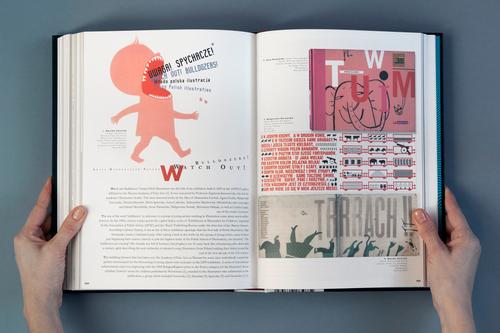Adam Mickiewicz Institute Monocle
Drawing on History
Charting the history of Polish illustration is an illuminating way to understand the country’s cultural evolution. Internationally, many will be familiar with the renowned Polish School of Posters and its riotously colourful approach. But all applied arts in the country flourished between the 1950s and 1980s – and illustration experienced a golden era. In this period, many artists found that the constraints of socialist realism made them channel their creativity into children’s books – a medium that allowed them to express themselves with few limitations and to reach the masses via high-quality, inexpensive books that were widely distributed.


The aesthetic thread that links Polish illustrations is simply how diverse they have always been: some were painterly, some experimental and others influenced by folk art. As many as 400 artists were active in the field at the time and that tradition continues with a new generation of Polish illustrators, who have a number of international awards under their belts – and whose dazzling work is supported by a network of independent publishers. To find out more, leaf through the newly released book Captains of Illustration: a joyful survey of a century of this art form.
To find out more about Polish culture see: culture.pl
Here are a few inspiring highlights.

Elzbieta Gaudasinska
Hans Christian Andersen, Calineczka, Krajowa Agencja Wydawnicza (1983)
Just as in Hans Christian Andersen’s fairy tales, charming protagonists are accompanied by disquieting antagonists. The accompanying illustrations often combine many layers of meaning into one image. The beauty and the irony of Elzbieta Gaudasinska’s portrayal of Thumbelina bewitches children and amuses adults.

Olga Siemaszko
Lewis Carroll, Alicja w Krainie Czarow, Nasza Ksiegarnia, Warszawa (1969)
Alice in Wonderland is second only to the Bible as being the world’s most illustrated title. At the beginning of the 20th century, the English editions’ visual renditions of the stories were widely available. But Polish artists soon brought a new perspective. Olga Siemaszko’s work highlights the surreal aspects that are a hallmark of the original text.

Adam Kilian
Lyman Frank Baum, Czarnoksieznik ze Szmaragdowego Grodu, Nasza Ksiegarnia, Warszawa (1962)
Illustration goes further than just putting pen to paper: recently it has often turned digital and in the past it involved experimentation. Captains of Illustration explores the methods of artists throughout history, including the avant-garde approach of Adam Kilian, who played with creating wood and linocut-like effects in his work.

Hanna Krajnik
Wanda Grodzienska, Swierszczowa muzyka, Nasza Ksiegarnia, Warszawa (1970)
First started in 1950, Poczytaj Mi, Mamo (Read to me, Mummy) is Poland’s longest-running and broadest children’s book series. Many of the country’s illustrators, including Hanna Krajnik, jumped on board with the project. These books were inexpensive and widely distributed via bookshops and newsstands, allowing the resulting art to reach the masses.
Ignacy Witz
Irena Tuwim, Pampilio, Nasza Ksiegarnia, Warszawa (1962)
What would children’s books be without animals? Furry creatures are the great recurring characters in most children’s favourite stories – and artists love drawing them. For illustrators, applying their creativity to a book is a great way to see their work published far and wide. It also allows them to tap into their inner child; and often that means experimental, playful results are on the cards.

To find out more about Polish design see: designguide.pl

